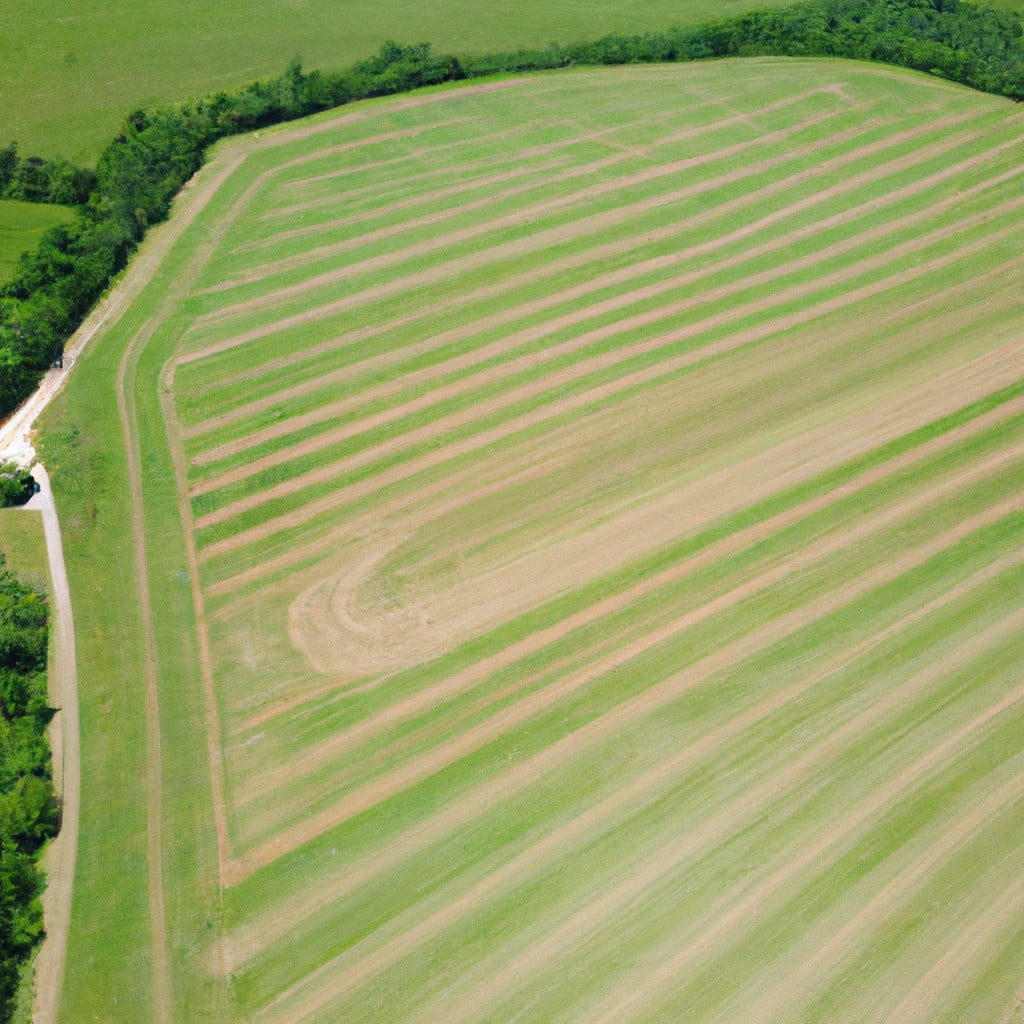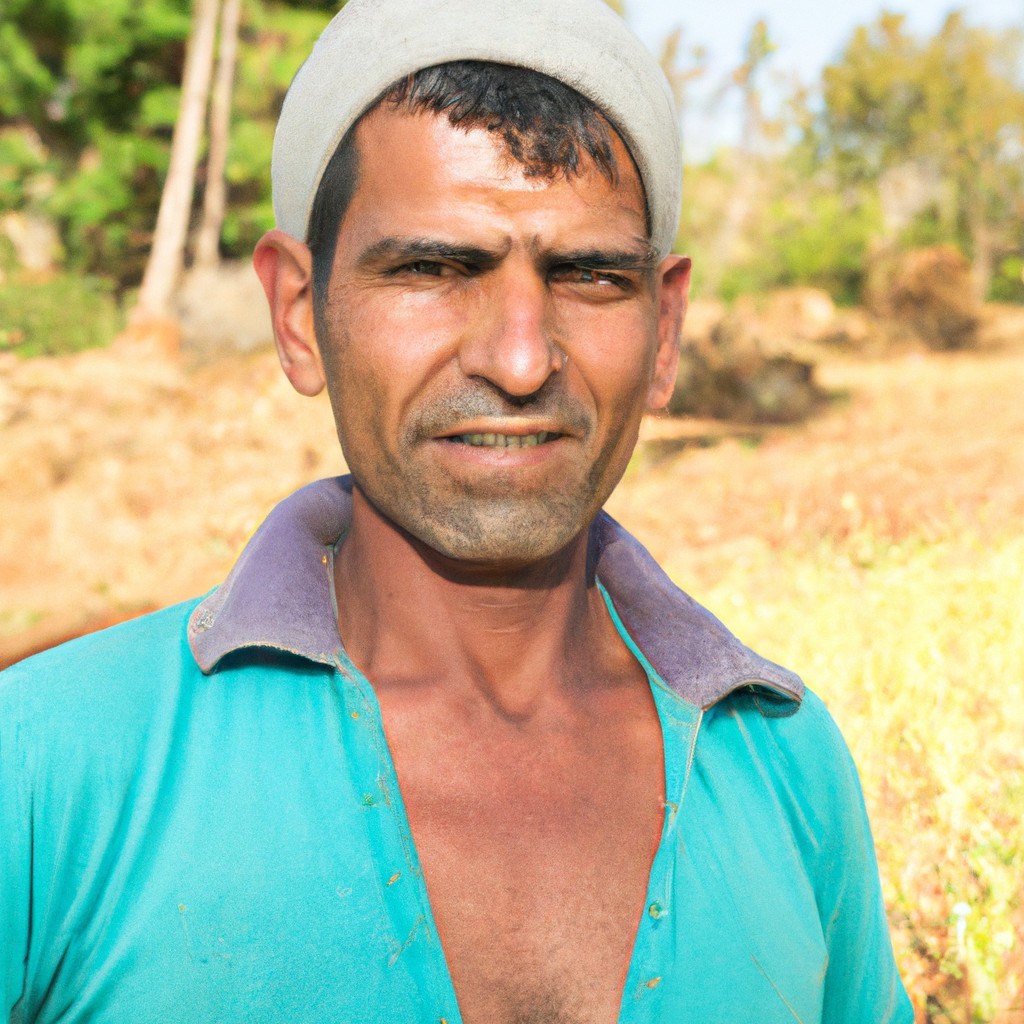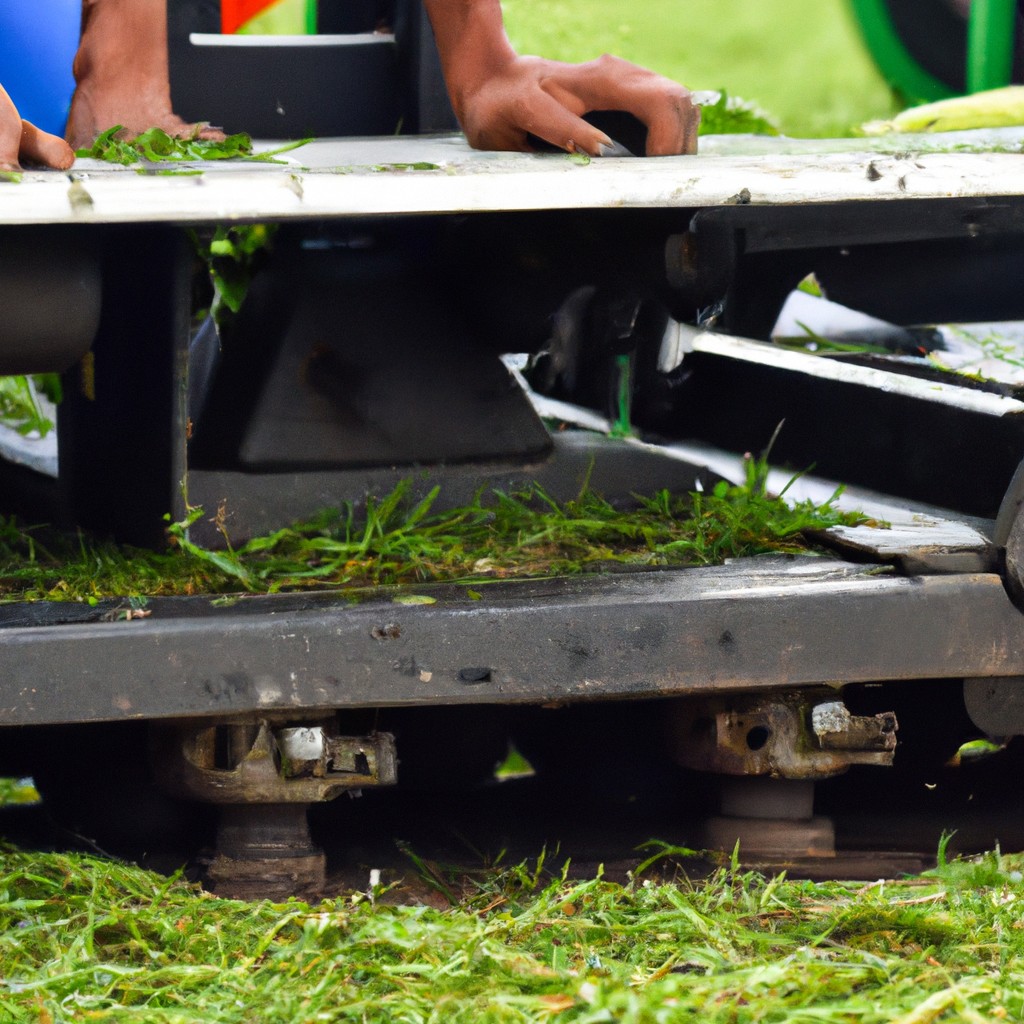No, regenerative farming does not use more land; instead, it enhances land productivity through soil health improvement measures.
Contrary to common misconceptions, regenerative farming does not necessarily require more land. In fact, it can be more efficient and productive than conventional farming over time.
Regenerative farming techniques, such as cover cropping, crop rotation, and agroforestry, work to improve soil health, increase biodiversity, and enhance ecosystems services, all of which can lead to higher yields on the same amount of land.
While the initial transition may involve some adjustments, the long-term benefits of regenerative farming can outweigh these challenges.
This article will delve deeper into the specifics of how regenerative farming practices can optimize land use, offering a comprehensive understanding of this sustainable approach to agriculture.
Key takeaways:
- Regenerative farming does not require more land.
- Techniques like cover cropping and crop rotation increase productivity.
- Regenerative agriculture prioritizes soil health and biodiversity.
- Livestock integration enhances soil fertility and carbon sequestration.
- Regenerative farming can decrease the overall farmland footprint.
Look Inside:
Defining Regenerative Farming

A holistic approach to agriculture, regenerative farming advocates for building and maintaining soil health, promoting biodiversity, and enhancing ecosystem services.
These aims are achieved through techniques such as minimal soil disturbance, organic fertilization, and crop rotation.
Not only does this system work to store carbon in the soil, effectively mitigating greenhouse gas emissions, but it also ensures resilient farm ecosystems capable of withstanding adverse climate conditions.
Moreover, regenerative farming provides productive and nutrient-rich crops without compromising the environment, thereby feeding the world sustainably.
What Is Regenerative Agriculture?
Regenerative agriculture aims to mimic nature’s processes to create a farming system that both replenishes and improves the resources it uses, rather than depleting or harming them. The ultimate objective of this practice is diversified, resilient farm ecosystems that are more akin to natural systems.
This holistic approach goes beyond sustainability to actively restore and enhance environmental health while also maintaining high productivity levels. Key practices often include cover cropping, rotational grazing, diversifying crop rotations, and reducing tillage, which collectively improve soil health, sequester carbon, and boost farm resilience.
Regenerative Agriculture Principles
When it comes to regenerative agriculture, there are five key principles that guide its practices and management choices.
These include reducing soil disturbance such as unnecessary tilling and ensuring the presence of living roots year-round to enhance soil health.
Diversifying plants is another key principle, aimed at increasing genetic diversity, thus improving ecosystem resilience.
The fourth principle involves maintaining a cover crop to protect the soil from erosion while providing organic matter.
Lastly, farmers incorporating livestock into the system can help facilitate this cycle — for instance, their manure assists in recycling nutrients while their ranging prevents overgrowth of any one plant species.
This set of principles aims to improve soil fertility, conserve water, sequester carbon, and increase biodiversity — all crucial aspects of sustainable agriculture.
Historical Context of Regenerative Agriculture
Regenerative agricultural practices have origins in ancient civilizations and were revived in the mid-20th century following instances of severe soil erosion and loss of fertility. The Dust Bowl calamity in the 1930s, for instance, brought the importance of soil conservation into sharp focus.
Pioneers such as Robert Rodale, J.I. Rodale and Lady Eve Balfour emerged during this era, advocating for practices that rejuvenate the soil. The term ‘Regenerative Agriculture’ was coined in the 1980s, used to describe farming that not only maintains but improves the resources it uses, particularly the soil.
Today, this movement continues growing, championed by farmers and consumers who acknowledge its role in sustainable food production and climate change mitigation.
Role of Livestock in Regenerative Agriculture
Livestock plays an integral role, contributing significantly to ecosystem services and sustainable food production.
Properly managed grazing systems enable soil compaction reduction, nutrient cycling, and carbon sequestration enhancement.
By mimicking natural herd behaviors through rotational grazing, farmers move livestock from one pasture to another, preventing overgrazing.
This facilitates faster vegetation growth and reduces soil erosion.
Manure from livestock adds organic material to the soil, increasing its fertility and enhancing its ability to retain water.
Thus, livestock bolster the regenerative farming process, promoting a robust and thriving ecosystem.
Regenerative Agriculture Techniques
Primarily, cover cropping plays a pivotal role in preserving and restoring soil health. Planting a variety of crops shields the ground from erosion, helps manage soil fertility, and suppresses weeds.
Next, the practice of crop rotation, where different crops are planted in a sequence over several seasons, breaks the pest and disease cycles and enhances soil nutrients.
Composting also acts as a natural fertilizer. This technique enriches the soil by using decomposed organic matter, improving soil structure, and promoting the growth of beneficial microorganisms.
Lastly, livestock integration brings a host of benefits. Animals contribute to the ecosystem by trampling and eating cover crops, this action aids in the decomposition process and helps sequester carbon.
Each of these techniques contribute significantly towards maintaining a robust, biodiverse, and self-sustaining ecosystem, making the most efficient use of the land.
Scope of Land Use in Traditional Farming
Conventional farming often involves a monocropping system, focusing on a single crop over vast tracts of land. This broadly uniform approach is designed to maximize crop yield within a short period. However, heavy reliance on chemical fertilizers and pesticides can lead to soil degradation, thus requiring even more land over time to maintain the same level of productivity.
Additionally, the lack of crop variety and natural ecosystems in such agricultural setups leaves the soil more exposed to erosion and susceptible to pest invasion. As a result, traditional agriculture’s land use, while initially seeming more efficient, can lead to diminishing returns and deteriorative consequences for the environment in the longer run.
Scope of Land Use in Regenerative Farming
Adopting regenerative practices can maximize agricultural output on existing farmland, negating the need for additional land. These methods focus on nurturing soil health and biodiversity to intensify the productive capacity.
Key techniques include cover cropping and crop rotation which improve soil fertility, thereby leading to increased yields without the need for expansion.
Moreover, polycultures or mixed cropping systems – another important facet of regenerative farming – contribute to efficiency, since multiple crops are grown on the same plot, further optimizing land use.
In essence, the scope of land use in regenerative farming extends beyond mere spatial considerations to encompass productivity and resilience, thereby promoting an efficient and sustainable agricultural system.
Comparing Land Use Between Conventional and Regenerative Practices
In a conventional agricultural system, emphasis is often placed on maximum, immediate crop yield with less regard for long-term environmental effects. This often leads to excessive use of synthetic fertilizers, pesticides, tilling, and monocropping which can degrade soil health, leading to dependent soils that require continual input to ensure productivity.
Conversely, regenerative practices prioritize soil health, natural ecosystem balance, and resource conservation. Techniques such as crop diversification, rotational grazing, and cover cropping are employed to increase soil organic matter and thus soil fertility, reducing the need for synthetic inputs. This focus on systemic health tends to increase the carrying capacity of the land, enabling a higher overall productivity per unit area in the long run.
This comparison reveals a crucial element: while regenerative farming may require a deeper understanding of ecosystems and a longer timeframe to see financial gain, it fosters a more sustainable, resilient, and productive land use system, often on the same or even reduced land footprint.
Crop Yield in Regenerative Farming
Enhanced soil fertility and increased biodiversity, typical of regenerative techniques, often lead to a surge in crop yield over time. As these practices build stronger, healthier soils, plants can access more of the nutrients they need to flourish, leading to larger and more resilient yields.
Additionally, the integration of different plant and animal species can contribute to pest and disease control, reducing yield losses. While regenerative farming may not result in immediate yield increases, studies indicate that as the soil improves and the ecosystem stabilizes, these sustainable practices can match or surpass conventional yields.
Soil Health in Regenerative Farming
Regenerative farming places a keen emphasis on boosting soil fertility. By minimizing tilling and using organic compost and cover crops, these practices foster more robust, diverse microbial populations.
This natural micro-ecosystem improves soil structure, leading to better water retention and nutrient availability. Healthier soil also stores more carbon, contributing to climate change mitigation.
Moreover, crops grown in vibrant soils are more nutritive and resilient against pests and diseases, reducing the need for synthetic inputs and interventions.
Hence, improving soil health not only enhances yield but also furthers the overall sustainability of the agricultural system.
Impact of Regenerative Farming On Biodiversity
Regenerative practices aim to cultivate a diverse range of plant species, causing a ripple effect of increased biodiversity both above and below ground. Diversification of crops helps attract a wider variety of birds, bees, and other pollinators, which are necessary for plant reproduction.
Below the surface, soil health improves with the richness of biodiversity, enhancing the natural symbiotic relationships between plants and beneficial microbes. A healthy soil biome promotes the breakdown of organic matter into nutrients, improving plant health, resilience, and productivity.
Ultimately, this boost in biodiversity drastically reduces dependency on synthetic fertilizers, pesticides, and herbicides, creating a more sustainable, self-sufficient farming system.
Challenges in Implementing Regenerative Farming
Transitioning from traditional practices to regenerative ones can pose a few obstacles that need to be recognized and addressed. These primarily involve initial costs, re-education, and time to see results.
Initial costs can slightly be higher, as new equipment or seeds may be needed, or infrastructure may need adapting for new farming practices. Government subsidies also tend to favor conventional farming, making regenerative methods seem less financially appealing at first glance.
Farmers must also relearn certain farming methodologies and unlearn others, which implies a paradigm shift in their agricultural practices. This includes understanding soil health, composting, and the integration of livestock into crop production.
Lastly, results from regenerative farming are not immediate. Improving soil health and increasing biodiversity is a gradual process that takes place over several years. Farmers must thus be prepared for the long haul and not expect overnight results.
These challenges are indeed significant, but the rewards promise long-term sustainability and resilience. With the right mindset, support, and resources, farmers can overcome these hurdles and foster a more sustainable farming future.
The Future of Farming: Sustainable or Regenerative?
As agriculture looks toward the future, the choice isn’t necessarily between sustainable and regenerative farming; rather, it’s about integrating the best aspects of each to create a truly resilient food system.
Adopting regenerative strategies can enhance sustainability goals, contributing to healthier soil, improved water cycles, and increased biodiversity. Importantly, these techniques can mitigate climate change by sequestering carbon in the soil.
The goal isn’t to replace all conventional practices but to implement regenerative ones where they can have the most impact. Ultimately, a concerted effort is needed to optimize land use, promote ecological balance, and ensure long-term food security.
FAQ
Does regenerative agriculture increase yields?
Yes, regenerative agriculture does increase crop yields by enhancing soil health, improving its water retention capacity, and reducing soil erosion.
What percentage of farmland is regenerative?
Approximately 1.5% of the total arable acres in the U.S., which is about 900 million acres, is being farmed using regenerative methods.
Do organic farms take up more space?
Yes, organic farms typically require more land compared to conventional farms to produce the same amount of produce due to the prohibition of synthetic fertilizers.
How does regenerative farming impact the land use efficiency compared to conventional farming?
Regenerative farming increases land use efficiency by rejuvenating the soil’s health and fertility, thereby boosting crop yields compared to conventional farming.
Can regenerative agriculture practices actually reduce the overall farmland footprint?
Yes, regenerative agriculture practices can reduce the overall farmland footprint by enhancing soil health which leads to increased productivity and reduced need for vast expanses of monoculture crops.
In what ways does the scale of farming operations influence land use in regenerative agriculture?
The scale of farming operations influences land use in regenerative agriculture by determining the level of crop diversification, complexity of rotational grazing, and extent of natural ecosystem integration, which directly impacts the overall sustainability and soil health of the agricultural system.




